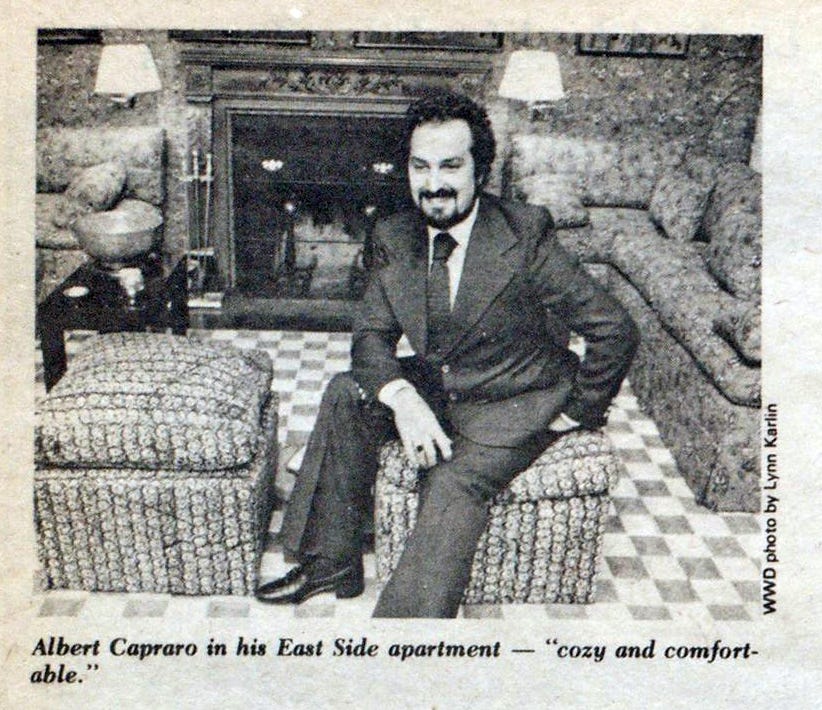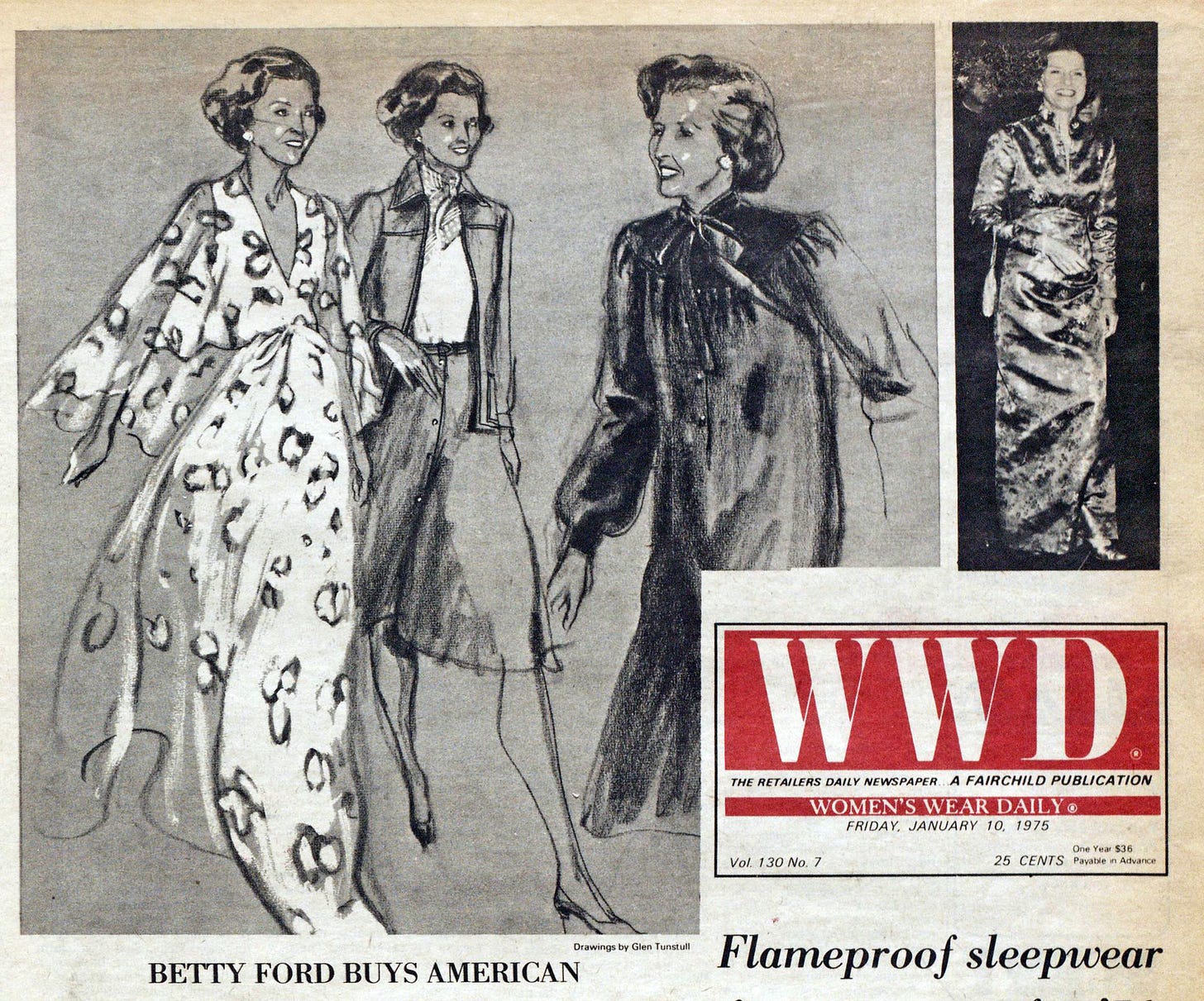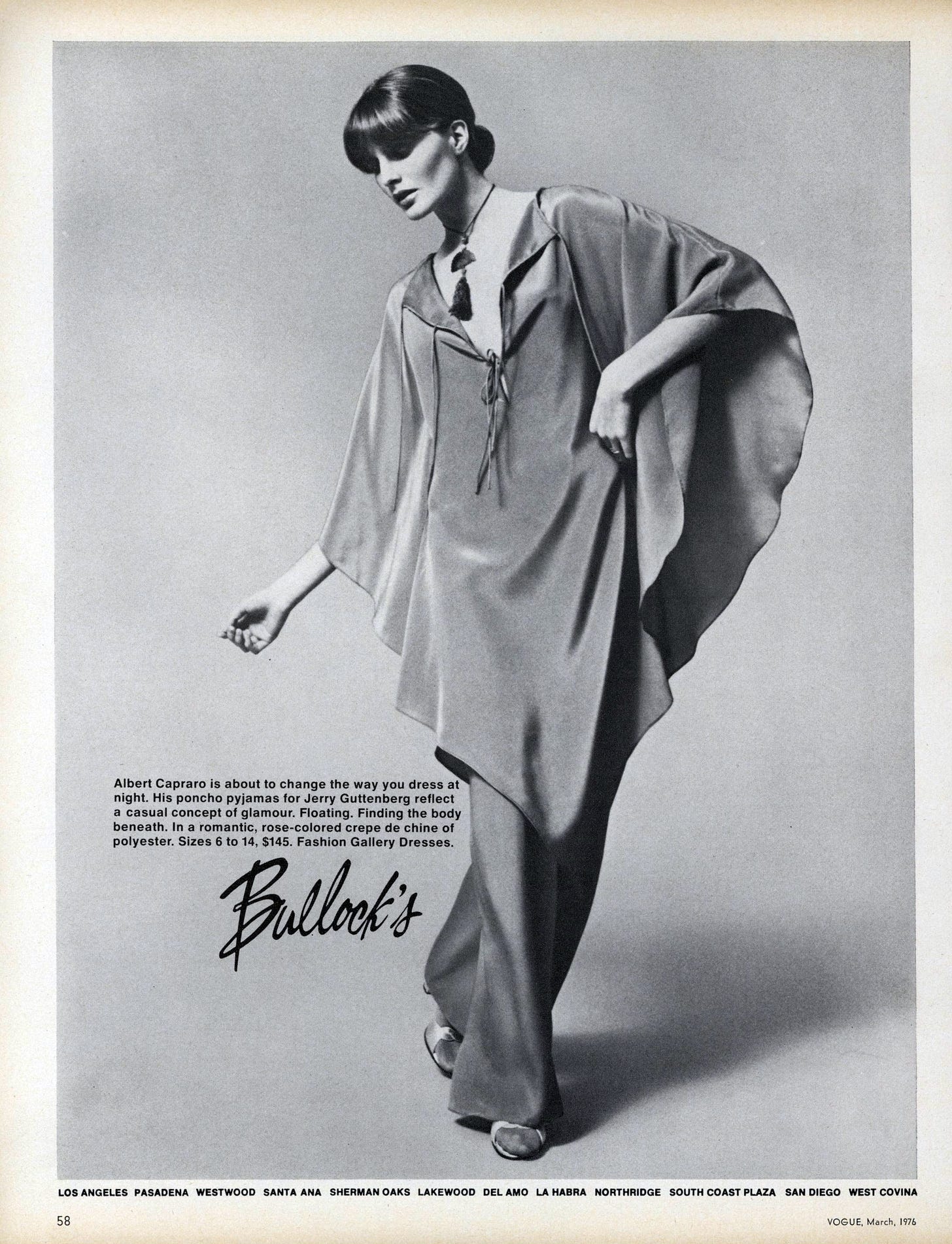The third of the five designers profiled by House Beautiful in 1976 is Albert Capraro (one and two). While lacking in name recognition today, Capraro was widely celebrated in the second half of the 1970s. For a while I have been planning to write a thorough biography of him (similar to the one I wrote on Richard Assatly)—I will try to get that done soon, but for now, here is an abbreviated life story.
Born and raised in Manhattan, Capraro graduated from Parsons in 1964, winning the Ferdinando Sarmi award. After college, he worked in the salon of milliner Lilly Daché, before joining Oscar de la Renta. Albert was there for eight years, designing the Oscar de la Renta Boutique collection and assistant designer of the main line (many OdlR dresses that are particularly beloved were designed by Capraro). In July 1974, Capraro started his own line with the backing of the new firm Jerry Guttenberg (of which he became part owner). Six months later, the new First Lady of the United States, Betty Ford, came across an interview with Capraro in the Washington Star-News—intrigued by the way he spoke of using only American materials, she called up and invited 31-year-old Albert to the White House. After ordering twelve outfits from his collection, Capraro found himself suddenly famous before even having a runway show. Affordably priced, feminine, flattering, and American-made, Capraro’s designs became an instant sell-out. Ford continued to primarily wear his designs throughout her husband’s tenure—ordering over forty ensembles a year, many of them specially designed for state events. Her teenage daughter, Susan Ford, also wore Albert’s designs. In 1985, Capraro closed his read-to-wear company to focus on private clients; he continued to design for Betty Ford and other dignitaries until he retired in 2005. Capraro passed away in 2013 at age 70.
The home featured below was a Beekman Place duplex “sandwiched between the Shah of Iran’s townhouse and the oil-rich Yemen ambassador’s residence.” Of the duplex, in January 1976 Capraro told the Boston Globe, “The pomegranate prints are from Java, the straw rugs are from China, the pearl-encrusted mirrors are from King Farouk’s palace and the furniture is Middle Eastern. Mrs. Ford has seen pictures of the apartment and she’s dying to see it. But the security involved is unbelievable.” He lived there with Carmine Porcelli, who had been a designer and merchandiser for Oscar de la Renta’s Something! bridge-priced dress collection while Capraro was there. Porcelli followed Capraro when he left, becoming managing director and president of Albert Capraro Ltd. up until its closure. In the 1990s, Porcelli became an executive at Oscar de la Renta and then Halston International. It is unclear what years they were in a relationship for, but in 1975 they shared with Harper’s Bazaar a menu of recipes for summer entertaining—I have included them at the bottom of this newsletter. Carmine also wrote the House Beautiful piece that led to this whole series.
Capraro once said, “Clothes should be mysterious, sexy and feminine." As someone who has collected quite a few of his dresses, I find that to be the perfect distillation of his design aesthetic.
Keep reading with a 7-day free trial
Subscribe to Sighs & Whispers to keep reading this post and get 7 days of free access to the full post archives.







